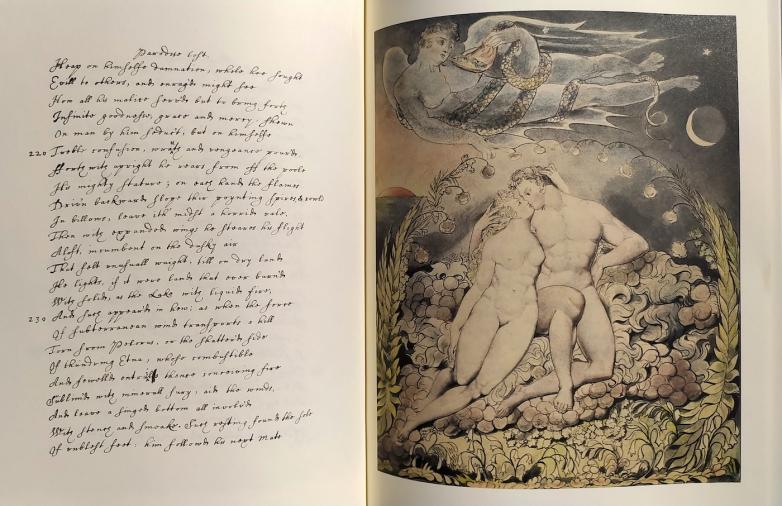Limited Edition Facsimile of Paradise Lost Manuscript Published

Paris — Independent publisher SP Books released the only surviving manuscript of John Milton’s Paradise Lost, published in book form for the very first time. Alongside the handwritten poem, 12 iconic illustrations by William Blake.
The manuscript, which corresponds to Book I of the poem, consists of 33 pages written between 1658 and 1663. Milton had by that point been blind since 1652 and was composing his epic poem out loud, memorising the lines and dictating them to members of his family, as well as friends such as the English poet and satirist Andrew Marvell.
The genesis of Paradise Lost
The germ of the idea that became Paradise Lost seems to have been in Milton’s mind from about 1640. Evidence for this is the existence of drafts of a verse tragedy to be titled Adam Unparadised. Milton was then 32 years old: his pamphlets supporting civil and religious liberty had already given him a prominent political profile and after the Civil War he was to flourish at the heart of Cromwell's Commonwealth government. In private life, he wrote and suffered an unhappy marriage, as well as weakening eyesight.
The Restoration marked the end of two decades of public service. His writings were condemned, and in 1660 he was even briefly imprisoned. Thenceforth he devoted himself to scholarly study and his writing. Completely blind since 1652, supported by his third wife - the previous ones had died in childbirth - and his daughters, Milton saw his health steadily decline. He nevertheless continued with his great poem, composing out loud, memorising the lines and then dictating them to members of his family, as well as friends such as the poet Andrew Marvell.
The resulting manuscript of Paradise Lost is therefore a collective work. Milton was in the habit of composing in bed, at night or early in the morning. According to contemporary witnesses he then 'sat leaning backward obliquely in an easy chair, with his leg flung over the elbow of it' to dictate the results, verbally correcting the transcripts as they were read back to him by his amanuenses.
The present fragment is the only surviving witness of the creative process behind Paradise Lost, and corresponds to Book I of the poem. It consists of 33 numbered pages and appears to be a fair copy by a professional scribe, compiled from drafts supplied by Milton's various helpers. Supervised by Milton, corrections to the manuscript are present in five different hands.
It was used for the first edition of the poem in October or November 1667 and on the first page it bears the imprimatur (let it be printed) of the “Stationers’”*, then necessary in order to print and publish a book: Let it be printed. Thomas Tomkyns, one of the religious servants of the most reverent father and lord in Christ, Lord Gilbert, by divine providence archbishop of Canterbury. Richard Royston. Entered by George Tokefield, clerk.
Although finished in 1665, Paradise Lost did not appear until two years later, due to the combination of a paper shortage resulting from the Second Anglo-Dutch War; an outbreak of plague; and the Great Fire of London. Its publisher, Samuel Simmons, bought it for £5, and printed 1300 copies of the first edition selling them for 3 shillings each. His contract with Milton, the first of its kind between an author and editor, stipulated that Simmons should pay a further £5 on publication.
The manuscript was sold by Simmons to the bookseller Brabazon Aylmer for £25, then passed through various hands before its acquisition by J. Pierpont Morgan at Sotheby’s in London in 1904. It is now in the Morgan Library & Museum in New York.















